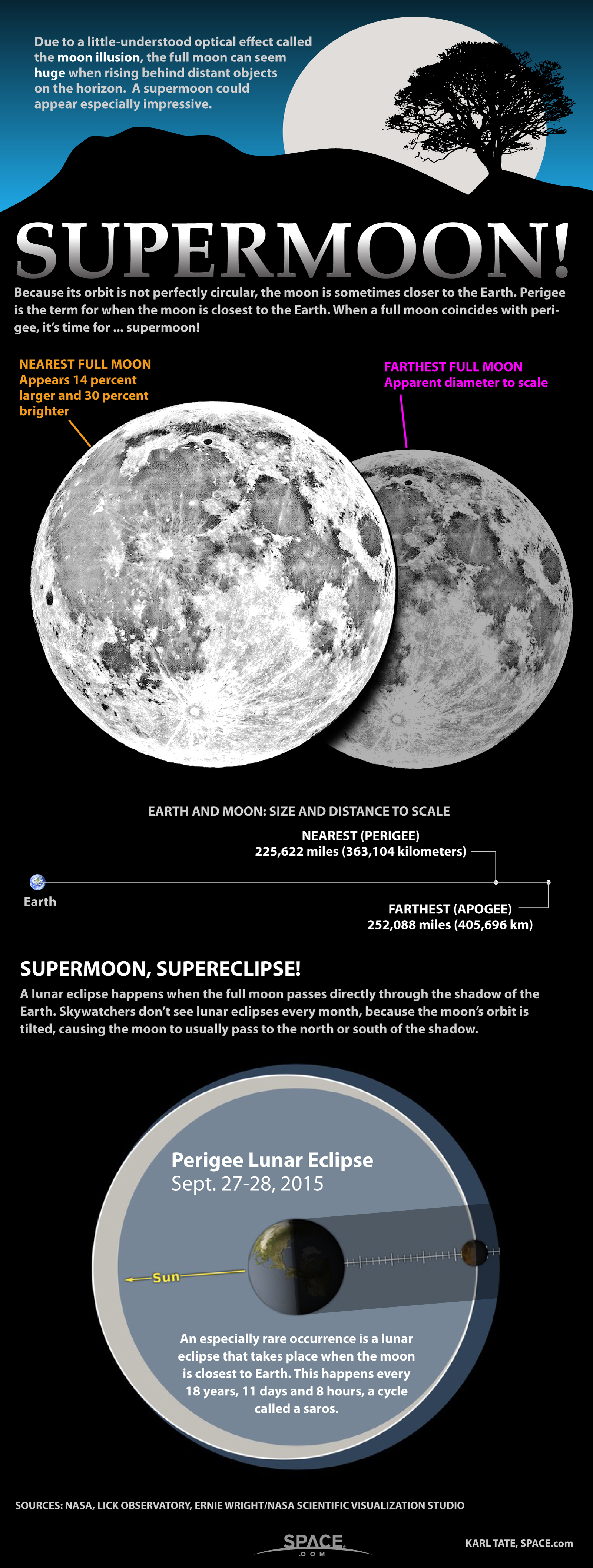Why November's Super-Close Supermoon Is a Full Beaver Moon

November's supermoon — the name given to a full moon that occurs when the satellite is at its closest point to Earth during the lunar orbit — will be the biggest supermoon in about 70 years.
Algonquin Native American tribes as well as American colonists called the November full moon the Beaver Moon because "this was the time to set beaver traps before the swamps froze, to ensure a supply of warm winter furs," according to the Old Farmer's Almanac.
The Slooh Community Observatory will offer a live broadcast for November's full moon on Nov. 13 at 8 p.m. EST (0100 GMT on Nov. 14). You can also watch the supermoon live on Space.com, courtesy of Slooh. [Supermoon November 2016: When, Where & How to See It]
An alternative name for November's full moon is the Frost Moon, which was also coined by Native Americans, according to the Almanac.
November's supermoon will be the largest since 1948, and the full moon will not come this close to Earth again until Nov. 25, 2034, according to NASA. This month is the second in a series of three consecutive supermoons happening late in 2016, with the first taking place in October, and the last in December.
Full moons occur when the moon is on the side of the Earth opposite to the sun, and the three celestial bodies all line up. (Sometimes they perfectly line up, causing a lunar eclipse.) The moon's orbit around the Earth is not a perfect circle, so during each orbit, the moon reaches a minimum distance from the planet (this point is called perigee) and a maximum distance (apogee). When the moon is full, and is also at perigee, it's called a supermoon. The supermoon can look 14 percent larger than it does during apogee, and up to 30 percent brighter, NASA officials have said.
The Slooh Community Observatory is hosting a live broadcast of the November supermoon, starting Nov. 13 at 7 p.m. EST (1200 a.m. GMT Nov. 14). You can watch the live stream here on Space.com, courtesy of Slooh.
Breaking space news, the latest updates on rocket launches, skywatching events and more!
Follow Elizabeth Howell @howellspace, or Space.com @Spacedotcom. We're also on Facebook and Google+. Original article on Space.com.

Elizabeth Howell (she/her), Ph.D., was a staff writer in the spaceflight channel between 2022 and 2024 specializing in Canadian space news. She was contributing writer for Space.com for 10 years from 2012 to 2024. Elizabeth's reporting includes multiple exclusives with the White House, leading world coverage about a lost-and-found space tomato on the International Space Station, witnessing five human spaceflight launches on two continents, flying parabolic, working inside a spacesuit, and participating in a simulated Mars mission. Her latest book, "Why Am I Taller?" (ECW Press, 2022) is co-written with astronaut Dave Williams.

